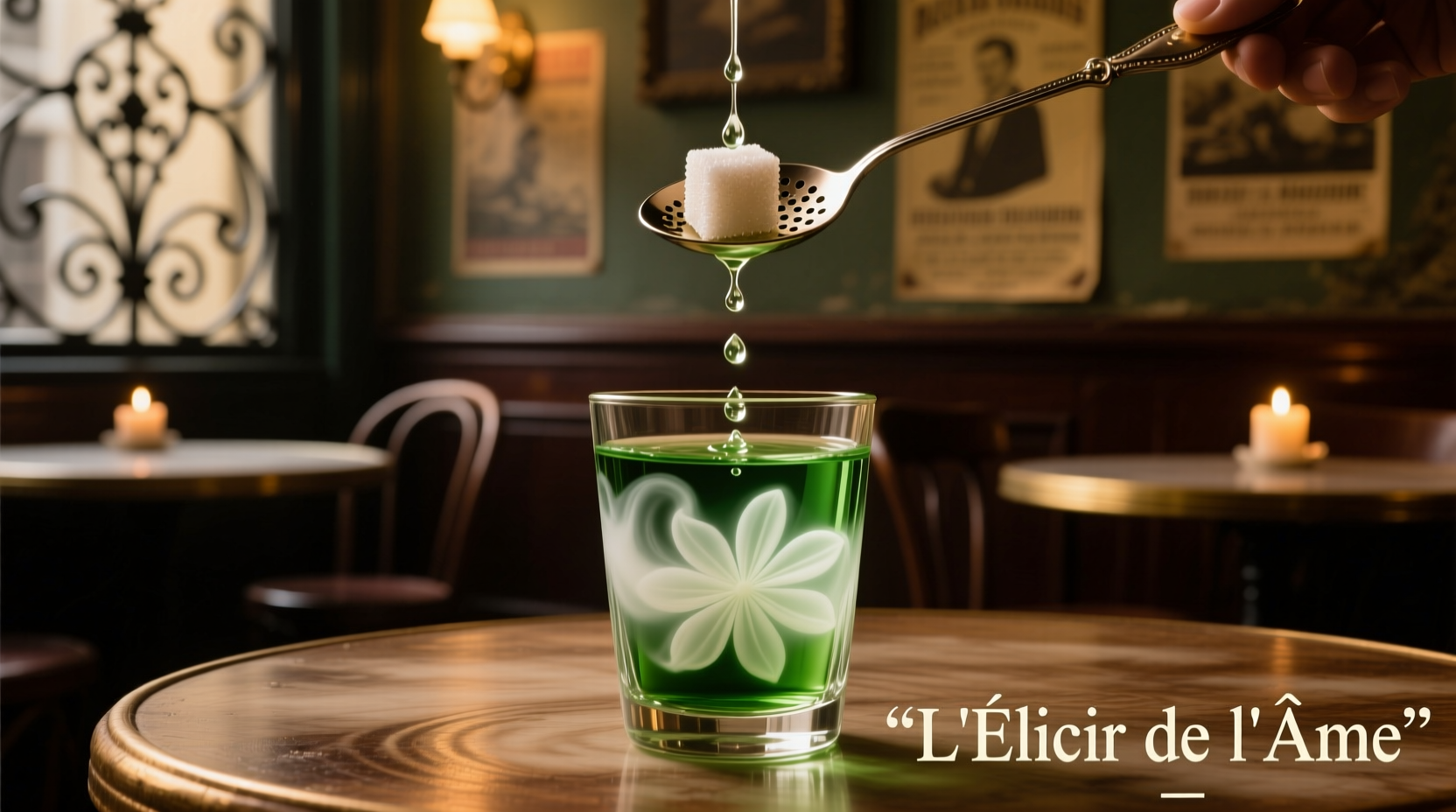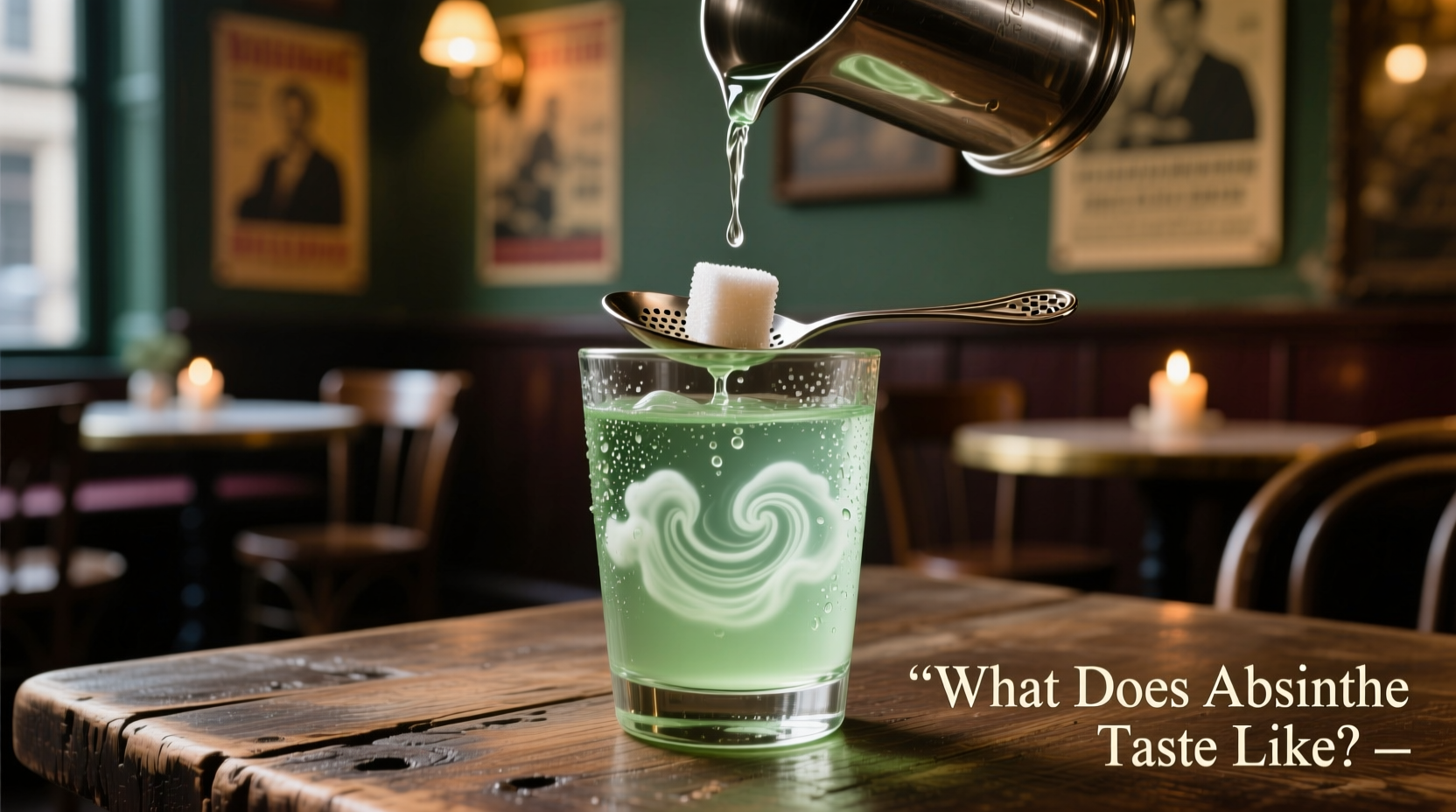Decoding Absinthe's Signature Flavor Journey
Forget the hallucinogenic myths—modern absinthe's taste is defined by its botanical composition. The 'Holy Trinity' of ingredients creates its unmistakable profile: aniseed provides the dominant licorice-like sweetness, fennel adds subtle sweetness and complexity, while grande wormwood (Artemisia absinthium) delivers that characteristic bitter finish. As defined by EU spirit drink regulations, authentic absinthe must contain these core botanicals, directly shaping its sensory experience.
Why Dilution Is Non-Negotiable: The Louche Effect
Drinking absinthe neat misses the point entirely. The traditional preparation—slowly dripping iced water over a sugar cube resting on a slotted spoon—triggers the mesmerizing louche (clouding). This isn't just theater; it fundamentally transforms the flavor chemistry. As water integrates:
- Bitter compounds become soluble, softening wormwood's sharpness
- Essential oils release complex secondary notes
- The high alcohol content (typically 45-74% ABV) becomes palatable
| Characteristic | Neat (Undiluted) | Diluted (3-5:1 Water Ratio) |
|---|---|---|
| Primary Flavor | Intense anise punch, harsh bitterness | Smooth licorice, balanced herbal complexity |
| Mouthfeel | Oily, viscous, alcohol-burning | Silky, rounded, cooling finish |
| Aromatic Notes | Pungent,单一 herbal | Layered: fennel, citrus peel, mint, subtle spice |
| Visual | Clear emerald green | Opalescent milky cloud (louche) |
How Absinthe's Flavor Evolved Through History
Absinthe's taste profile has shifted dramatically due to regulatory changes and botanical rediscovery. Early 19th-century Swiss formulations contained up to 70mg/kg of thujone (wormwood compound), yielding intensely bitter profiles. Following the 1915 global ban, underground producers used substitutes like tansy, creating harsh, unbalanced versions. The modern revival, documented by The Wormwood Society, prioritizes historical accuracy with regulated thujone levels (max 35mg/kg in EU), restoring the complex herbal balance lost during prohibition.
When Absinthe Shines (and When to Skip It)
This spirit excels in specific contexts but has clear limitations:
- Ideal for: Aperitif service before dinner (European tradition), cocktail bases like Sazeracs, or pairing with rich cheeses and dark chocolate
- Avoid if: You dislike strong anise flavors (similar to black licorice), seek mild spirits, or expect sweetness—authentic absinthe contains no added sugar beyond optional preparation
- Critical note: Never consume neat in large quantities; the 45-74% ABV requires dilution for safe, enjoyable tasting as confirmed by Serious Eats' spirit analysis

Your First Absinthe Tasting: A Practical Guide
Follow this professional method to experience authentic flavor:
- Use a slotted absinthe spoon with 1 sugar cube
- Place over 1oz (30ml) absinthe in a tulip glass
- Slowly drip 3-5oz iced water (3:1 to 5:1 ratio) over sugar
- Stir gently as louche develops (milky cloudiness)
- Sip slowly, noting flavor evolution from sweet anise to herbal finish
Quality indicators: Natural green hue (no artificial coloring), smooth transition during louche, and lingering herbal finish without chemical aftertaste.
Perfect Flavor Partners: Absinthe Pairings
Complement its complexity with:
- Cheeses: Aged goat cheese or Roquefort (bitterness cuts through fat)
- Desserts: Dark chocolate (70%+ cacao) or lemon tart (citrus brightens herbal notes)
- Cocktails: Sazerac (rye whiskey base) or Corpse Reviver No. 2 (gin/citrus balance)
Frequently Asked Questions
Does absinthe taste like licorice?
Yes, but more complex. Aniseed creates a licorice-like sweetness, yet balanced by fennel's mild sweetness and wormwood's bitterness—unlike candy which is purely sweet.
Why does absinthe turn cloudy when water is added?
This 'louche effect' occurs as water dissolves essential oils from botanicals. The cloudiness indicates proper extraction and releases complex flavors that remain locked when neat.
Is absinthe supposed to be bitter?
Authentic absinthe has a distinct bitter finish from wormwood, but quality versions balance this with anise sweetness. Excessive bitterness suggests poor formulation or improper dilution.
Can you taste the difference between brands?
Absolutely. Variations come from secondary botanicals: Swiss versions emphasize fennel, French styles add lemon balm, and artisanal producers incorporate hyssop or star anise for unique profiles.











 浙公网安备
33010002000092号
浙公网安备
33010002000092号 浙B2-20120091-4
浙B2-20120091-4